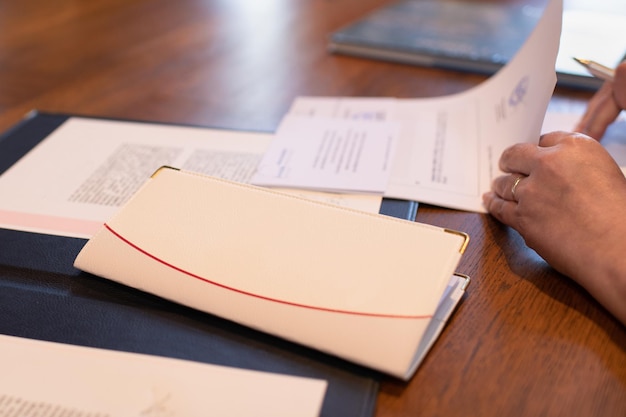Student Loan Forgiveness: Your Guide to Government Debt Relief Programs

Student loan forgiveness programs offered by the U.S. government provide eligible borrowers with the opportunity to have a portion or all of their federal student loan debt cancelled, reducing their financial burden and promoting economic stability.
Navigating the landscape of student loan forgiveness can seem daunting, but understanding the available government programs is the first step towards potential debt relief. These programs are designed to assist borrowers facing financial hardships, those working in public service, or those who meet specific eligibility criteria.
Understanding Federal Student Loan Forgiveness
Federal student loan forgiveness serves as a financial safety net for individuals struggling to repay their educational debts. These programs are funded by the U.S. government and aim to ease the burden on borrowers, stimulate the economy, and encourage participation in vital public service sectors.
Types of Federal Student Loan Forgiveness Programs
Several types of federal student loan forgiveness programs cater to different circumstances and career paths. Each program has specific requirements and eligibility criteria, so it’s crucial to understand the details of each to determine the best fit for your individual situation.
- Public Service Loan Forgiveness (PSLF): Designed for individuals employed by government organizations or qualifying non-profits.
- Teacher Loan Forgiveness: Available for teachers who serve in low-income schools for a specified number of years.
- Income-Driven Repayment (IDR) Forgiveness: Offers forgiveness after a set number of years (20-25 years) on an income-driven repayment plan.
Understanding the nuances of each program, including the application process and potential tax implications, is essential for successful participation.

Successful navigation requires careful attention to detail and adhering to deadlines. Seeking guidance from financial advisors or student loan experts can prove invaluable in making informed decisions.
In summary, federal student loan forgiveness programs offer a lifeline for borrowers, but thorough understanding and careful planning are essential for maximizing their benefits.
Public Service Loan Forgiveness (PSLF) Program
The Public Service Loan Forgiveness (PSLF) Program is a federal initiative designed to encourage individuals to pursue careers in public service by forgiving their remaining student loan balance after meeting certain requirements.
Eligibility Requirements for PSLF
To qualify for PSLF, borrowers must meet specific criteria, including working full-time for a qualifying employer, having eligible federal student loans, and making 120 qualifying payments.
- Qualifying Employer: Includes government organizations (federal, state, local, or tribal) and certain non-profit organizations.
- Eligible Loans: Typically include Direct Loans and Direct Consolidation Loans.
- Qualifying Payments: Payments made under an income-driven repayment plan or a standard 10-year repayment plan.
Meeting these requirements is crucial to be considered for PSLF. Failure to meet any of the conditions could result in denial of forgiveness.
PSLF presents a valuable opportunity for those dedicated to public service, offering a clear pathway to debt relief while contributing to their communities.
In summary, the Public Service Loan Forgiveness (PSLF) Program offers a significant benefit for those in public service. Strict adherence to requirements is necessary for successful participation.
Income-Driven Repayment (IDR) Forgiveness
Income-Driven Repayment (IDR) plans offer a way to manage federal student loan payments based on income and family size. After a specified period, the remaining balance may be forgiven.
How IDR Forgiveness Works
Under IDR plans, borrowers make monthly payments based on a percentage of their discretionary income. After 20 or 25 years of qualifying payments, the remaining loan balance is forgiven.
- Available Plans: Include Income-Based Repayment (IBR), Pay As You Earn (PAYE), and Revised Pay As You Earn (REPAYE).
- Forgiveness Timeline: Typically ranges from 20 to 25 years, depending on the plan and loan type.
- Tax Implications: The forgiven amount may be subject to income tax.
IDR plans provide an accessible option for borrowers with limited income, offering a pathway to eventual debt relief.

Careful consideration of the potential tax implications is vital when exploring IDR forgiveness. Consulting with a tax professional can help borrowers prepare for the tax liability associated with the forgiven amount.
IDR forgiveness presents a long-term solution for managing student debt based on income. Understanding the terms and potential tax consequences is essential.
Teacher Loan Forgiveness Program
The Teacher Loan Forgiveness program is designed to encourage qualified teachers to serve in low-income schools. This program offers loan forgiveness as an incentive to attract and retain educators in underserved areas.
Qualifying for Teacher Loan Forgiveness
To qualify for the Teacher Loan Forgiveness program, teachers must meet specific requirements, including teaching full-time for five consecutive years in a low-income school.
Eligible teachers may receive up to $17,500 in loan forgiveness. Those who taught math, science, or special education may be eligible for the higher amount.
The Teacher Loan Forgiveness program helps address the shortage of qualified teachers in low-income schools. This benefits both the teachers and the students in these communities.
In summary, the Teacher Loan Forgiveness Program supports educators in low-income schools. Meeting time and subject requirements is crucial for eligibility.
Other State and Federal Forgiveness Programs
In addition to the major federal programs, various state and other federal programs offer student loan forgiveness. These programs often target specific professions or geographic areas.
Exploring Niche Forgiveness Opportunities
Several niche student loan forgiveness programs cater to specific professions, such as nurses, doctors, and lawyers working in underserved communities. These programs offer loan forgiveness as an incentive to attract professionals to areas where their services are most needed.
State-sponsored programs may vary widely, offering loan forgiveness to residents who work in specific fields or locations within the state. Eligibility requirements and benefits can differ significantly between states.
Exploring these niche and state programs can uncover valuable opportunities for borrowers who meet the specific criteria. These programs can provide additional avenues for debt relief.
Successful identification and leveraging of these programs require dedicated research and attention to detail. Consulting with financial aid professionals can help borrowers discover specialized programs tailored to their circumstances.
In general, many programs are offered to alleviate the burden of Student loans.
Navigating the Application Process
The application process for student loan forgiveness programs can be complex. It requires careful planning and attention to detail.
Tips for a Successful Application
To navigate the application process effectively, borrowers should start by gathering all necessary documentation. This includes loan records, employment verification, and income statements.
Double-checking all information for accuracy is crucial, as errors or omissions can lead to delays or denial of the application.
Submitting the application before the deadline is essential. Borrowers should allow ample time for processing and follow up on their application status regularly.
Staying informed about program updates and changes is also important. Regulations and requirements for student loan forgiveness programs can evolve over time. Staying current ensures that borrowers remain eligible and are aware of any new opportunities.
The Loan Forgiveness application requires close attention from borrowers.
| Key Point | Brief Description |
|---|---|
| 🔑 PSLF Eligibility | Requires qualifying public service employment and 120 qualifying payments. |
| 💰 IDR Forgiveness | Forgives remaining loan balance after 20-25 years of income-driven payments. |
| 🍎 Teacher Loan Forgiveness | Offers up to $17,500 forgiveness for teachers in low-income schools. |
| ℹ️ Check State Programs | Explore state-specific forgiveness programs for additional opportunities. |
Frequently Asked Questions (FAQ)
▼
PSLF forgives the remaining balance on Direct Loans after 120 qualifying payments while working full-time for a qualifying employer.
▼
IDR plans base monthly payments on income. After 20-25 years of qualifying payments, the remaining balance is forgiven.
▼
Teachers who teach full-time for five consecutive years in a low-income school may qualify for up to $17,500 in forgiveness.
▼
The tax implications vary. While some forgiveness programs are tax-free, others may be subject to income tax on the forgiven amount.
▼
Check your state’s Department of Education website. Also, search for programs in your specific field, like nursing or law.
Conclusion
Exploring government programs for student loan forgiveness can provide a path towards financial stability for many borrowers. Understanding the eligibility requirements and application processes for each program, such as PSLF, IDR forgiveness, and the Teacher Loan Forgiveness Program, is essential for maximizing these opportunities. By carefully navigating these options, individuals can significantly reduce their student loan debt and secure a brighter financial future.





